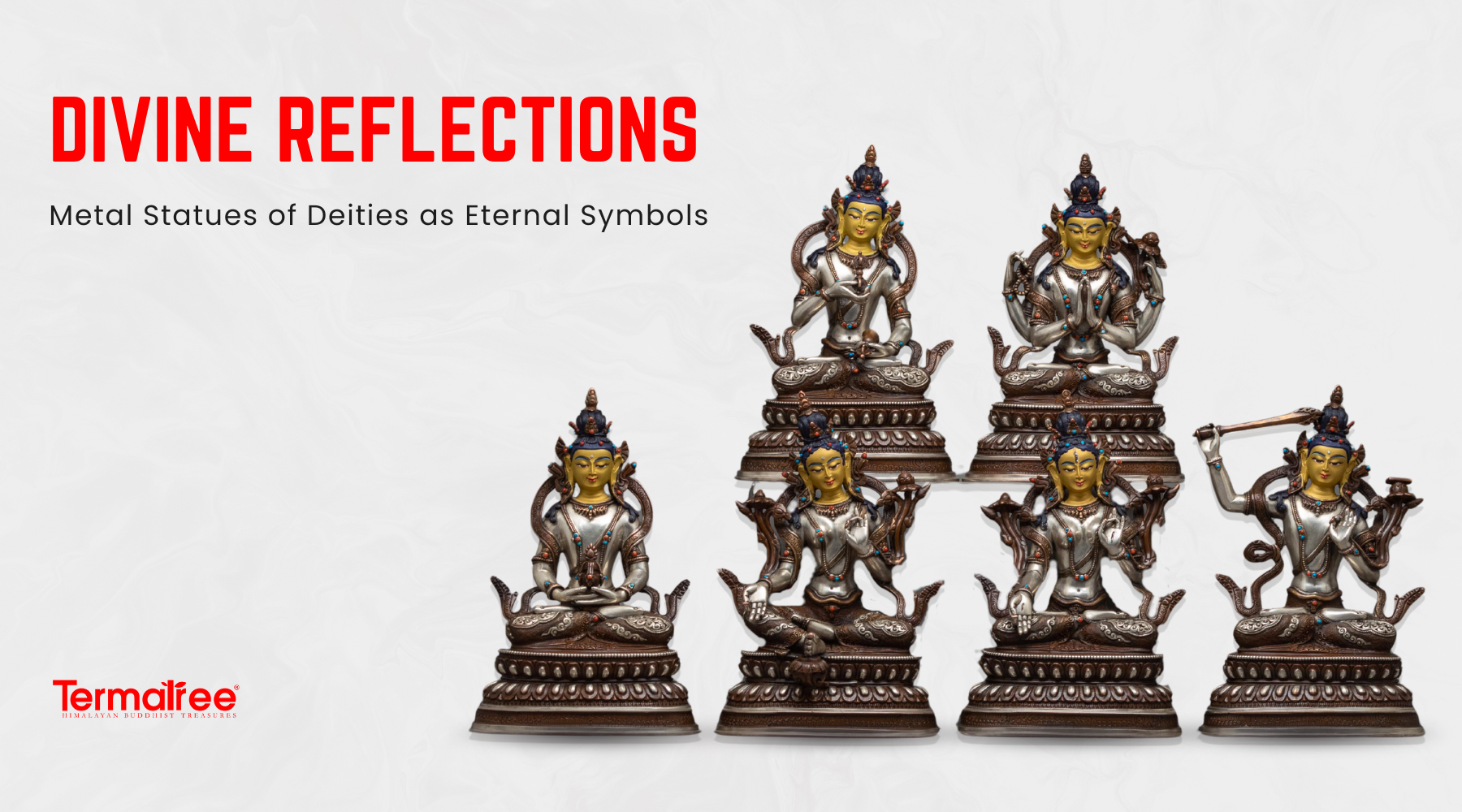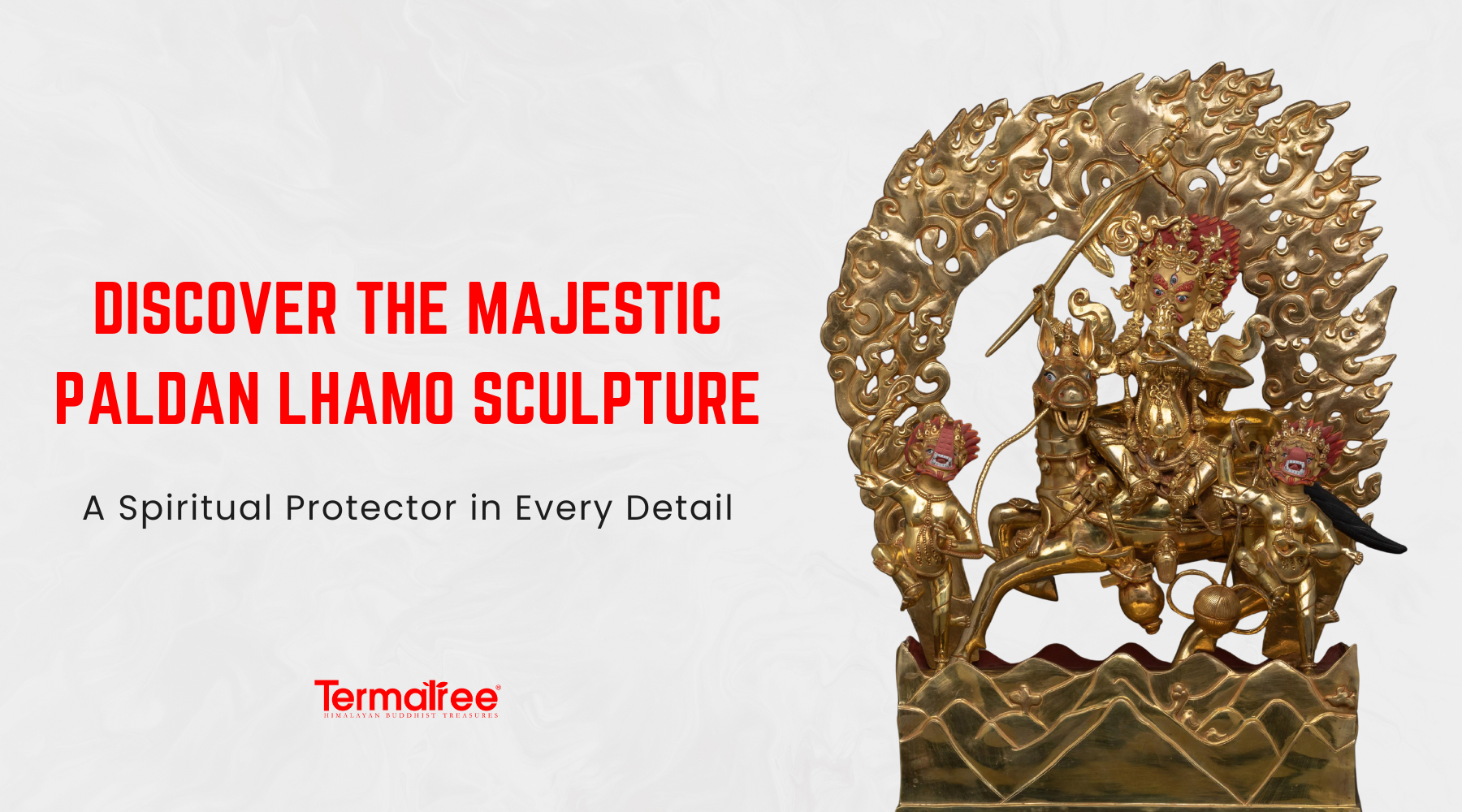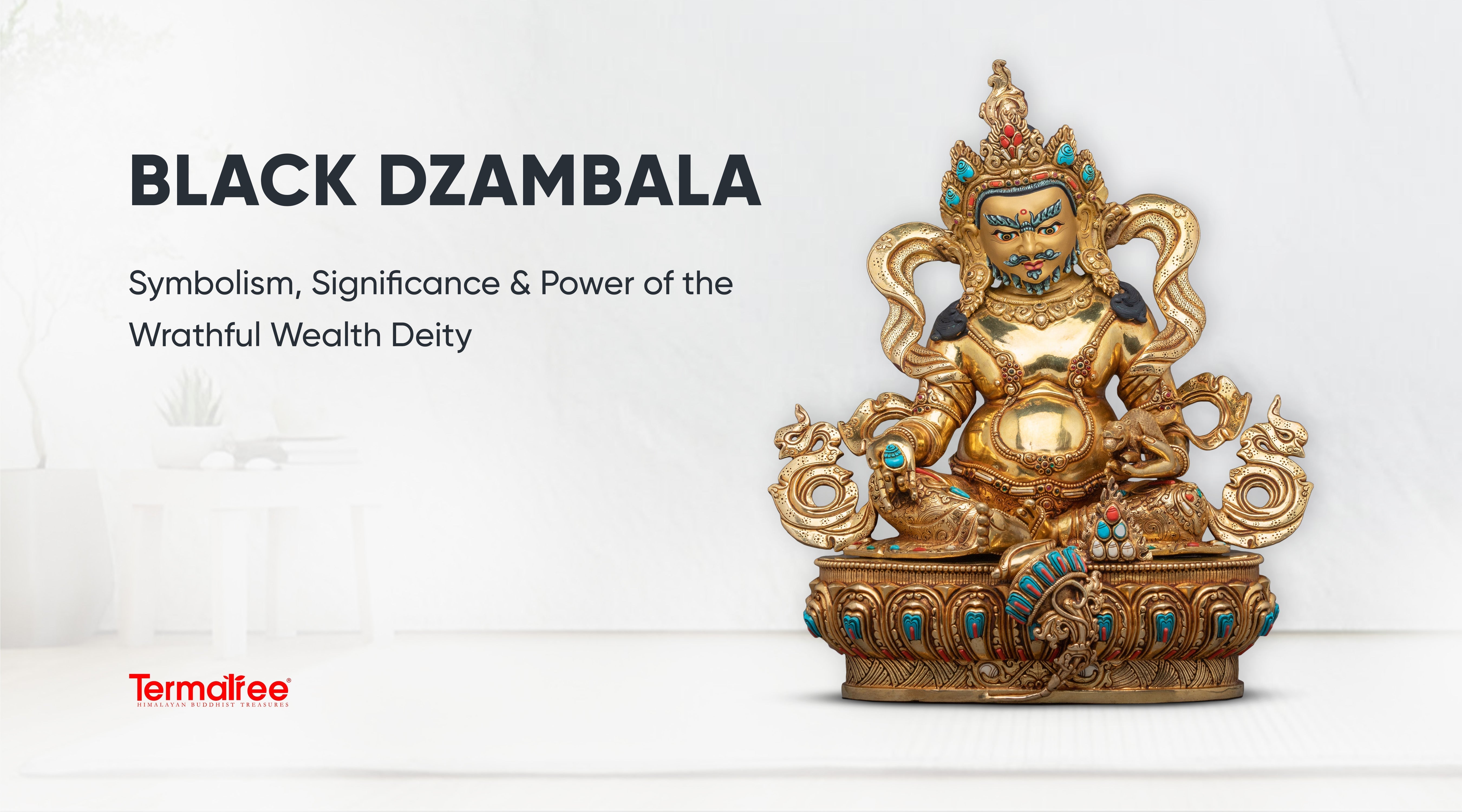The Genesis of Vajrayana in the Land of Snows
In the full, rich esoterica of Tibetan Buddhism, there are none more significant than the triad of Guru Rinpoche, the Indian scholar Shantarakshita, and King Trisong Detsen of Tibet. They are not simply historical figures of note; they were visionary founders of a lineage that would sprout, root, and grow into one of the most developed outposts of Dharma on earth. Their gathering was not accidental but rather providential—the 8th-century meeting was in part to signify the culmination of a prophetic karmic journey in establishing Vajrayana Buddhism in Tibet.
There were challenges, to be sure. Cultural resistance, supernatural interference, political disruption, and the continual friction of upholding iron will all threatened their combined efforts at every opportunity. However, the communal commitment they made to the Dharma, even with each coming from a different direction—Shantarakshita as the reasoned scholar, Padmasambhava as the tantric practitioner, and Trisong Detsen as the Dharma king—formed a stable and transformative narrative of Tibetan spirituality. This was not just three individuals coming together; it was the melding of wisdom, method, and compassion in the service of the enlightenment of a nation.
The King Who Invited the Dharma: Trisong Detsen’s Spiritual Aspiration

Despite there being other kings, King Trisong Detsen (742-800 CE) was more than a king; he was a Dharma visionary. Because of the influences of his predecessors, who had established preliminary interests in Buddhism, Trisong Detsen took that one step farther, and one step deeper. He was not just going to tolerate the Dharma; it was his intention to institutionalize the Dharma. This met with stiff resistance from Bönpo factions and differently mutable spirits of the elemental sacred Tibetan landscape.
Yet Trisong Detsen was unwavering. His intention to firmly plant Buddhism in the kingdom was unmistakable, as he began inviting great Indian masters, starting with the abbot of Nalanda, when he welcomed Shantarakshita, and eventually Padmasambhava, the great tantric Indian adept.
This royal vision was not only of a political motivation; it was a karmic unfolding. Tibet was ready and required a force strong enough to break centuries of belief. That force would be a convergence of king, abbot, and yogi.
Iconography and Representation in Art: King Trisong Detsen
In Himalayan sculpture and thangka art, King Trisong Detsen is most often depicted in a regal way, seated on a lotus throne, dressed in royal brocade, and with a peaceful expression on his face. His right hand may be on or around a gesture of generosity, while the left holds a Dharma text, a symbol of his crucial role in establishing the teachings.
In triad statues, the king often stands to the right of Guru Rinpoche and Shantarakshita to create a sacred triad that signifies transmission, realization, and implementation.
Contributions to Vajrayana Buddhism
King Trisong Detsen achieved his most significant accomplishment with the construction of Samye Monastery, Tibet’s first Buddhist monastery, with the guidance of both Shantarakshita and Guru Rinpoche. Since he was the first king of Tibet to institutionalize monastic vows, he supported the first wave of ordained Tibetan monks and allowed scholastic Buddhism to flourish. His endeavors created a structure not just for the entrance of Buddhism, but for a complete cultural Buddhist integration.
He also oversaw the first significant translation movement of the Sanskrit Buddhist texts into the Tibetan language. This opened the gates for a continued Dharma tradition—Tibetan Buddhism would become one of the most whole and preserved lineages of Indian Mahayana and Vajrayana Buddhism in the world.
The Scholar from Nalanda: Shantarakshita’s Lay of the Foundation

Shantarakshita, the abbot of prestigious Nalanda University in India, brought not mere teaching but, in fact, the very bones of structured Buddhism. He was a master of Madhyamaka philosophy and monastic discipline. Shantarakshita arrived and began laying down the necessary foundations for a scholastic Dharma culture - everything from vinaya (monastic rules) to debating schools to textual studies.
However, there were hindrances with which his mission had to contend. Elemental spirits and local deities resisted the radical shift he was trying to enact. Although he had the know-how, he neglected to rightfully apply one aspect of know-how: the application of tantric force. With this nugget of wisdom in mind, he deemed it necessary to invite Guru Padmasambhava to tame the land and its energies.
Iconography and Representation in Art: Shantarakshita
Shantarakshita is customarily represented as an august monk, correctly attired in the three-fold monastic robe, regal, in contemplation (possibly seated, legs crossed, etc.), either with both hands in the teaching mudra, or with one hand holding a begging bowl, while the other hand has a Dharma text. His face may express both tranquility and intellectual authority.
In triadic sculptures and paintings, he signifies the rational, discursive young element of Dharma, frequently positioned on the left of Guru Rinpoche.
Contributions to Vajrayana Buddhism
Shantarakshita was crucial in establishing the boundaries of the Dharma. He started the first Tibetan Sangha, ordained Tibetan monks, and summarized and put in order the primary teachings that make clear the more mystical layers of Vajrayana. He introduced not just the vinaya and sutra, but also Pramana and Madhyamaka systems that would ultimately flourish in monastic institutions of Sera, Ganden, and Drepung.
Shantarakshita was more than an administrator. He envisioned that for Dharma to flourish in the Tibetan context, it needed roots and wings: Roots of discipline and philosophy, and wings of direct realization based in tantric practice.
The Lotus-Born Master: Padmasambhava Enters Tibet

When Guru Rinpoche stepped onto the land of Tibet, he was not silent. He came as a force of spiritual reckoning—commanding the weather, supplanting spirits, and transforming obstacles through wrath. Where Shantarakshita laid the land, Guru Padmasambhava electrified it and transformed not only outer forces, but also the minds of those who encountered him.
One of his most well-known feats was his ‘domestication’ of local spirits and deities—substituting and transforming them into protectors of the Dharma. Guru Rinpoche did not destroy or kill them; instead, he transformed them. He demonstrated the very essence of the Vajrayana tradition—taking poison and transforming it into medicine, taking ego and transforming it into realization.
He devotedly collaborated and worked alongside Shantarakshita and Trisong Detsen to consecrate Samye Monastery, empower Tibetan disciples, and bury terma (spiritual treasures) for future generations—writings, relics, and practices in the mountains and caves, as well as in the minds of individuals to be harvested when needed.
Iconography and Representation in Art: Guru Rinpoche
Guru Rinpoche is one of the most recognizable figures in Tibetan art. He is most commonly depicted seated in a royal position, wearing a lotus hat with a vulture feather hat, holding a vajra in his right hand and a skull cup in his left, with a staff (khatvanga) resting in the crook of his arm. His expression is penetrating—half-wrathful, half-compassionate—indicating his mastery of both the mundane realm and the supramundane.
Contributions to Vajrayana Buddhism
Guru Rinpoche is both spiritual and mystical in his contributions. He brought in Vajrayana's inner yogas and wrathful practices, offered empowered initiations to advanced disciples, and laid the tantric groundwork that would eventually blossom into the Nyingma lineage. He transmitted lineages and teachings to many great masters such as Yeshe Tsogyal and Vairochana.
He also bequeathed the Nine Heart Children, a group of realized disciples he empowered to preserve and disseminate his teachings. Yeshe Tsogyal, Vairochana, Namkhai Nyingpo, and others were torch bearers of Vajrayana and witnessed the Guru's remarkable skill as a guru in the relative realm. The lineages they transmitted to this day remain uninterrupted and serve as a witness to the solid foundation Guru built.
The Founding of Samye Monastery: A Symbol of Sacred Collaboration
Samye Monastery, which is the first and most illustrious of Buddhist monasteries in Tibet, was not merely a structure: it was a spiritual paradigm. It was architected as a replica of the Buddhist cosmological model of Mount Meru and the four continents. Samye was created by the united efforts of these three individuals, representing the integration of method (upaya), wisdom (prajna), and aspiration (bodhicitta).
Guru Rinpoche consecrated the land with ritual and mantras while also protecting it. Shantarakshita brought the Vinaya, Abhidharma, and Madhyamaka teachings to the land and trained the first monks. Trisong Detsen funded and sanctioned the institution with royal support; it was a civil institution. Of the first seven Tibetan monks, the "Seven Men Who Were Tested," they were ordained by Shantarakshita and were the seed of a living tradition.
Thus, Samye became the womb of all Tibetan Buddhism, a sacred womb from which monastic and Tantric lineages were born. It was also the proving ground for integrating Indian philosophy, Himalayan ritualism, and Tibet's spiritual thirst into a coherent spiritual civilization.
The Genesis of the Nine Heart Children
At the end of his journey in Tibet, Guru Rinpoche developed a small group of fully ripened disciples in his entourage, who had not only received the teachings experientially but also embodied them as their being. These disciples were known as the Nine Heart Children, and they were identified and given ordination as a means of safeguarding the most authentic devotional levels of tantric Dharma.
Namely:
-
Yeshe Tsogyal, his consort and foremost disciple
-
Vairochana, the great translator
-
Namkhai Nyingpo, the wrathful practitioner
-
Gyalwa Chokyang, Nanam Dorje Dudjom, and others.
All of them became living embodiments of Guru Rinpoche’s enlightened mind, and would carry out whatever needed to be done to preserve his teachings, even if a more obscured, or even less favourable situation had presented itself. Many of the terma treasures disclosed first in later centuries could eventually be traced back to these individuals.
The Legacy of Their Sacred Convergence
The work of these three individuals was literally time-less and form-less. Their cumulative heritage produced not only a religion, but a civilization founded on compassion, knowledge and wisdom, and the mysticism of eternal reality. This legacy brought forth the Nyingma, Kagyu, Sakya, and Gelug schools of Tibetan Buddhism as each drew upon the collective balance and way of life they developed together.
Guru Rinpoche’s teachings were enshrined in terma texts destined to ripen time and place, while Shantarakshita's academic aspect continued in the many monastic universities like Ganden, Sera, and Drepung. And the Dharmic essence of King Trisong Detsen lived on in the Tibetan leaders who were suitable stewards of the marriage of Dharma and governing.
Even though they are understood by Tibetan masters of today, they see in the partnership of these three figures the ideal for fostering Dharma. Theirs is an enduring narrative to reflect upon, especially for any age seeking to steward shine into our darkness—path is not just a guru, but a scholar and a king—method, view, and support.
Why This Triad Still Matters Today

The holy convergence of Guru Rinpoche, Shantarakshita, and King Trisong Detsen was beyond a meeting of minds, but rather the karmic unfolding of the seeds of Vajrayana Buddhism in Tibet. Together their vision, wisdom and spiritual power created a karmic connection to build a foundation in place for the deep roots of the Dharma to take hold and flourish through the ages.
Each embodied a universal facet of awakening: Trisong Detsen was the visionary king, Shantarakshita explained and established the philosophical roots of Buddhism, and Guru Rinpoche established the path of the practitioner and guided the practice through tantra. They shaped the practices that explore the depths and spiritual wealth of Tibetan Buddhism. They shaped temples and translated scriptures. In short, they shaped the soul of Tibetan Buddhism.
Their work is a practice of awakening for future masters, including the Nine Heart Children of Guru Rinpoche, who demonstrated how to carry the flame of realization into new lands, places, and lineages. To remember their sacred legacy is to recognize that lasting transformation arises from a common cause, from dedication and from unyielding faith and belief in the Dharma.




